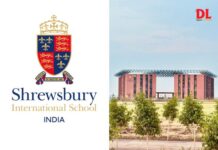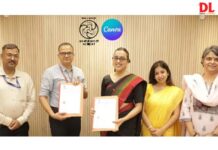Dr M.S. Palanichamy who has assumed his office in 2003 is the First Vice Chancellor appointed by the Government of Tamil Nadu in Tamil Nadu Open University and is heading the University having. In Tamil Nadu Open University, he is taking steps to provide Higher Education including areas widows, housewives, working men and women, disabled and those who are denied Higher Education due to family and social reasons. He has established study centres at 10 important towns of Tamil Nadu and 300 Information Centres at Taluk levels and is taking keen interest to provide education through Radio Channel
In emerging trends of e-Learning, where do you place TNOU? What are the innovative e-Learning solutions, best practices or policies specific to the University that make it a glorified learning destination?
Before I answer this question, let me put it in perspective. The Tamil Nadu Open University was established by an Act of the State Legislative Assembly in October 2002. After I assumed office as the first and founder Vice- Chancellor in February 2003, I would say the momentum in establishing the University began in right earnest. Now, the University offers more than 300 Courses in about 75 Programmes across a wide range of disciplines and at various levels and streams such as vocational, professional, traditional, etc. The University now caters to about 60,000 students distributed across the State through hundreds of learning centres. As regards our instructional delivery, as of now, it is predominantly print-based as is the case in other Open and Distance Learning (ODL) systems in the country. We use self-learning oursewares since he inception of this nstitution, which is a record of sorts in the State. Having created courses in print in self-learning format, which is webready, we are right now at the stage of augmenting the learning experiences of our students through multi-media stand-alone CDs, which could be used both for synchronous and asynchronous environments. More than 100 such CDs are being created now while plans for the rest are in train. This should clearly suggest that we don’t see e-Learning in its restricted sense of learning materials
available on the web. We use e-Learning in its generic sense of providing electronic learning support to students rrespective of who and where they are.
In that sense, besides learning CDs, we are putting in place mechanisms for electronic networking of learning centres for better efficiency in the delivery oflearning experiences. This includes the 24/7 HelpDesk, touchscreen facilities,
networking of student management. Looking at these developments vis-à-vis the fact that the University is barely 5 years old, the TNOU is much ahead of
its other ‘older’ ODL competitors in the State.
What is distinctive about learning in other places than in the educational institutions, like learning while on move? How might the change evolve through the increasing use of digital technologies?
Learning is more important than the mode through which one learns. It is time we demystify the claim that a student studying on-campus could be better than the one off-campus. Let us rub it in our minds that it is the student who learns with or without the teacher. The mode therefore to me is immaterial. Added to this is the factor of clientele. What I mean is you could easily categorise the students in an oncampus situation in terms of age, prior qualifications, etc. This is not possible in the ODL contexts and the TNOU is no exception to this rule, considering the fact that our students are more matured than their counterparts in the on-campus situation. So, I feel ODL has emerged as a seamless provision of education, quite contrary to the often-repeated and clichéd statement that ODL is only for those ‘who missed the bus’. No longer.
What are so far the consequences of an ICT-integrated curriculum and the use of ICT for the future professionals?
Consequences are that these professionals are well-informed. At the professional and personal levels, ICT-integrated curriculum has achieved what remained for years as unattainable in the teaching/learning contexts. Let me explain. It is not uncommon to hear statements such as curricula should meet not only the societal requirements but also personal learning styles. With the use of ICT, the issue of incorporating what is absolutely necessary and removing what is dispensable and thus making the curricula fit for purpose as well as meeting the varied learning styles through multi-media has become almost non-existent. This is a real boon for teachers and learners and in fact, for all the stakeholders. Nonetheless, the division this creates between information haves and information have-nots is to be addressed on a war footing.
How can education prepare individuals and society to benefit from ICT that increasingly permeate all realms of life?
How can ICT bring about a better balance between equity and excellence in education? While I reiterate the last sentence in the previous answer, I must also say even where facilities for ICT are available, teachers are still skeptical of their use. Various reasons could be attributed to this factor ranging from insecurity, ideology, etc., to indifference and apathy. First of all, teachers need to be prepared for the use of ICT which could be done only through a nationwide movement. Convincing the teachers and the students of the useof ICT, however, is only half the battle won. By creating the necessary infrastructure, the rest also could be won. As regards equity and excellence, if
technology is properly deployed, the best of teachers could be made available to all students, no matter who and where the students are. This is but one example though.
What are the challenges you face in achieving the targets that you have set? What has been your forte so far?
The TNOU, like any other ODL institutions, is heavily dependent on outsourced content. However, content creation is just a part of the whole operation of learning delivery. At present, therefore, the University is concentrating on putting together a strong core group, an absence of which has so far been a bottleneck to finish the projects in time. Once this is achieved, creation of quality content (i.e., learning objects) should not be a problem. Our forte has been self-learning materials in print and support services. Now, we want to get the same recognition for e-Content as well.
What are the new programmes being planned? What do you see the University five years hence?
We intend to make a departure from the imitative, traditional offerings and in so doing we want to be a catalyst for social transformation livelihood improvement. We see the TNOU not only as a University but also as a developmental agency. In other words, we are planning to launch Programmes at various levels that are innovative and need-based. An example could be that the rural youth on completing the Programmes designed for them could become skilled workers. To that extent, we already have several Programmes. However, to meet the growing workforce requirement satisfactorily, we intend to add several more. As per our roadmap, we will be the Centre of Excellence in ODL in India in about 5 years hence, working in purpose-built wireless environments catering to the needs of a wide variety of student clientele.






















